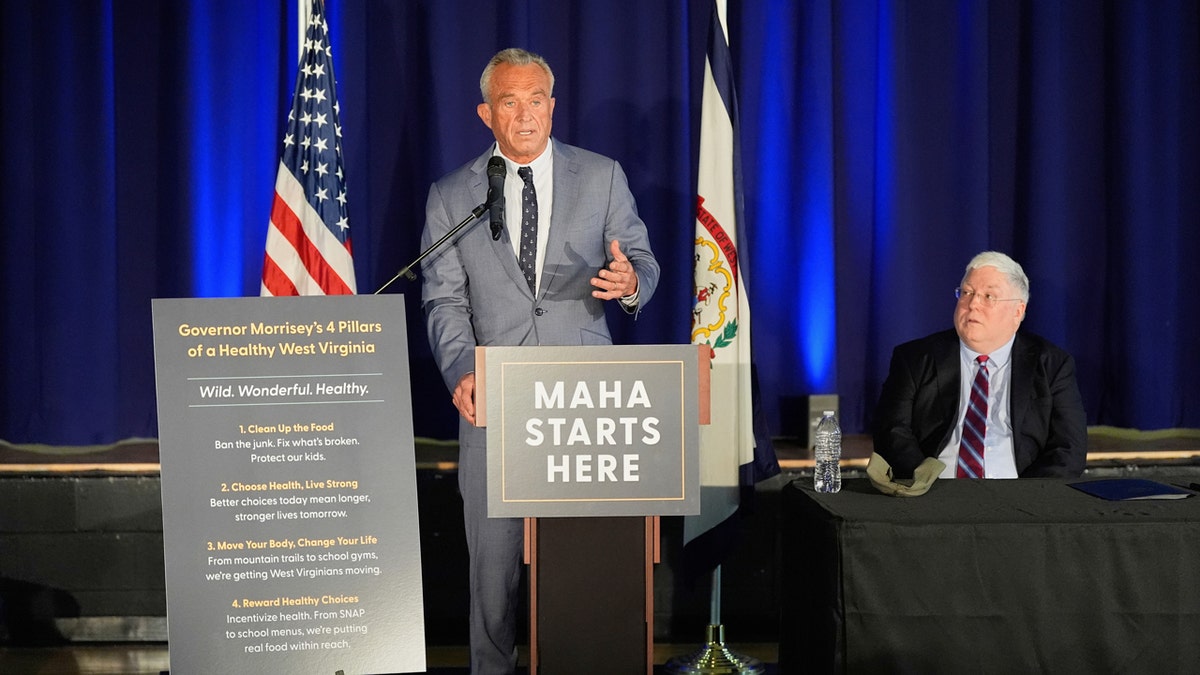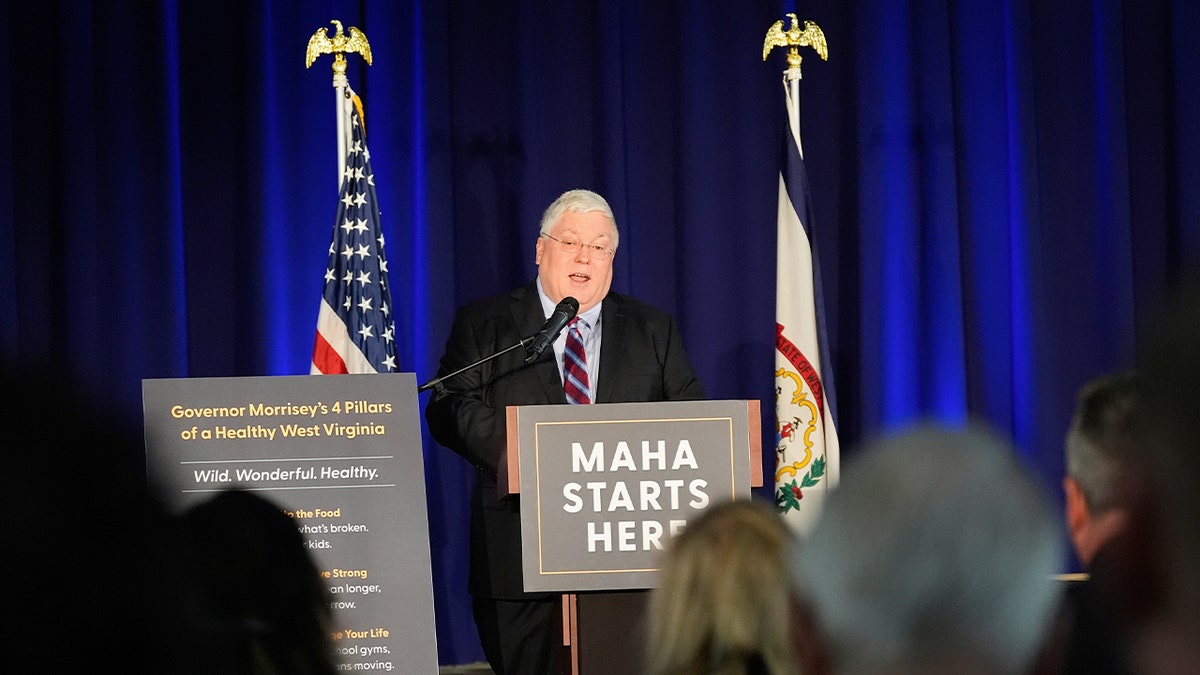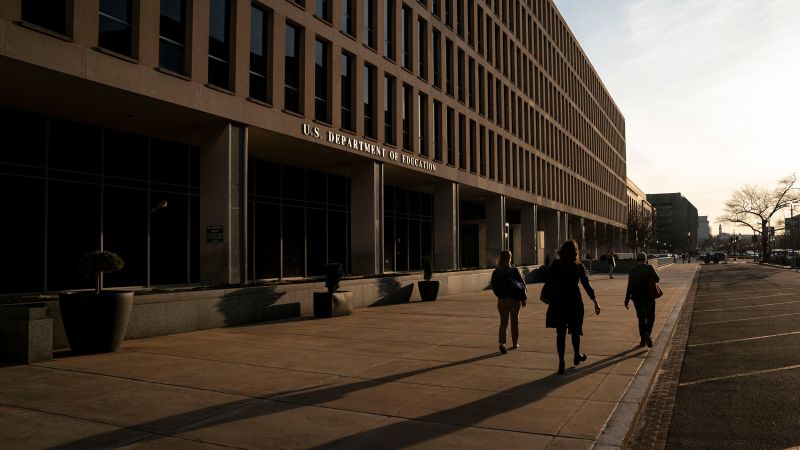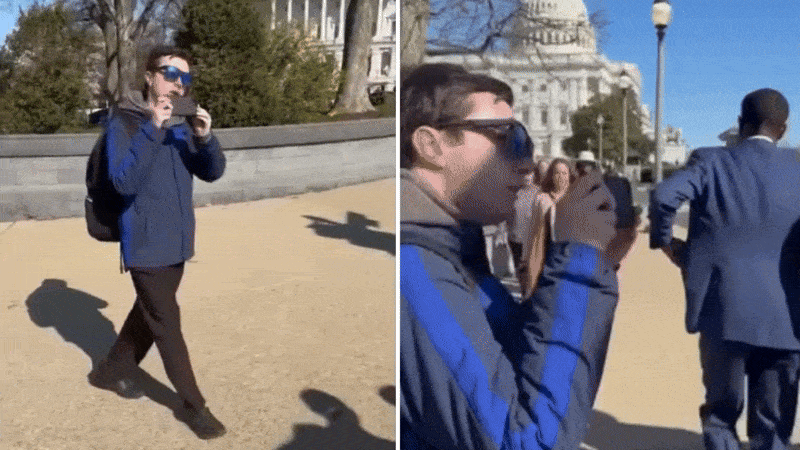Health
Chaka Khan on Her 60-Lb. Weight Loss: ‘I Was on a Liquid Diet for 2 Months'

Sign Up
Create a free account to access exclusive content, play games, solve puzzles, test your pop-culture knowledge and receive special offers.
Already have an account? Login
Use left and right arrow keys to navigate between menu items.
Use escape to exit the menu.

Health
Horace Hale Harvey III, a Pioneer in Providing Abortions, Dies at 93

On July 1, 1970, one of the first independent abortion clinics in the country opened on the Upper East Side of Manhattan. New York State had just reformed its laws, allowing a woman to terminate her pregnancy in the first trimester — or at any point, if her life was at risk. All of a sudden, the state had the most liberal abortion laws in the country.
Women’s Services, as the clinic was first known, was overseen by an unusual team: Horace Hale Harvey III, a medical doctor with a Ph.D. in philosophy who had been performing illegal abortions in New Orleans; Barbara Pyle, a 23-year-old doctoral student in philosophy, who had been researching sex education and abortion practices in Europe; and an organization known as Clergy Consultation Service on Abortion, a group of rabbis and Protestant ministers who believed that women deserved access to safe and affordable abortions, and who had created a referral service to find and vet those who would provide them.
What distinguished Women’s Services — a nonprofit that first operated out of a series of offices on East 73rd Street and charged on a sliding scale, starting at $200 — was its counselors. They were not medical professionals, but regular women, many of whom had had abortions themselves. Their role was to shepherd patients through the abortion process, using a model of a pelvis to explain the procedure in detail, accompanying the women into the procedure room and sitting with them afterward. They also reported on the doctor’s performance. It was a model that other clinics would adopt in the months and years to come.
The clinic’s humane approach was in stark contrast to the attitude of many hospital personnel at the time, Jane Brody of The New York Times wrote in 1970. “Don’t make it too easy for the patient,” one administrator put it, summing up the hospital’s philosophy. “If it’s too easy, she’ll be back here in three months for another abortion.”
Women’s Services had some other unique features as well. The waiting areas were cheerfully decorated, with piped-in music, and the operating tables had stirrups cushioned with brightly colored pot holders, a flourish Dr. Harvey, who died on Feb. 14, had brought with him from his days working out of hotel rooms in New Orleans.
Unlike many illegal abortion providers in those pre-Roe v. Wade days, who made the process as bare-bones and speedy as possible in anticipation of a police raid, Dr. Harvey had not only softened the atmosphere of his New Orleans procedure room to make it less terrifying; he had also offered the women cookies and Coca-Cola afterward, to help them recuperate.
“Harvey’s conviction was that even a healthy patient would feel sick, in the face of a cold, sterile hospital environment,” Arlene Carmen and the Rev. Howard Moody, the leaders of Clergy Consultation Service, wrote in their 1973 book about the group, “Abortion Counseling and Social Change From Illegal Act to Medical Practice.” “Since abortion was not a sickness, the atmosphere associated with hospitals needed to be avoided.”
Dr. Harvey was 93 when he died at a hospital in the town of Dorchester, in England, after a fall, his daughter Kate Harvey, said. He had lived in England for many years.
Women’s Services opened with $15,000 in funding from Dr. Harvey. Ms. Pyle, who was the administrator, described in an interview the chaotic early days, as clients poured in from all over the country. The clinic operated from 8 a.m. to midnight, with personnel working two shifts. Ms. Pyle slept on a couch in the building. On average, she said, the clinic performed about 72 abortions a day.
Newspapers wrote glowing reports, singling out Dr. Harvey as an innovator. But after less than a year, Ms. Carmen and Mr. Moody, of the Clergy Consultation Service, discovered to their horror that Dr. Harvey had been operating without a medical license. He had surrendered it in 1969, after the Louisiana authorities learned that he was performing illegal abortions. He had to go, and quickly, before he jeopardized Women’s Services’ legal status.
Dr. Harvey had become an abortion provider to combat what he felt was an epidemic of unsafe abortions at a time when unmarried women were denied access to contraceptives, and when comprehensive sex education was discouraged. Low-income women suffered disproportionally.
As a teenager, raised as a conservative Christian, Dr. Harvey had gone through a period of soul-searching, concluding that he was an atheist. During the Vietnam War, he registered as a conscientious objector; instead of fighting, he worked as a health counselor at a Y.M.C.A. Later, in New Orleans, he set up an independent sex-education program, giving lectures, answering questions by telephone and handing out brochures on college campuses.
To Dr. Harvey, the importance of abortion was the idea of preventing “the loss of potential for women,” Ms. Harvey, his daughter, said. “It was a matter of principle to him.”
Horace Hale Harvey III was born on Dec. 7, 1931, in New Orleans into a once-prominent family that had developed what is known as the Harvey Canal, which became part of the Intracoastal Waterway in 1924. His father, Horace Hale Harvey Jr., was a gambler, and the family was poor; they moved around a lot as he tried various professions, including setting up a loan company. His mother, Florence (Krueger) Harvey, was a secretary.
Horace studied philosophy at Louisiana State University, earning a bachelor’s degree in 1955, and a medical degree there in 1966. In 1969, he received a master’s degree in public health and a Ph.D. in philosophy, both from Tulane University, in New Orleans.
Dr. Harvey moved to England after leaving the New York abortion clinic — a choice he made, his daughter said, because he approved of Britain’s National Health Service. He settled on the Isle of Wight, another considered choice: According to his research, it had the highest average temperature and received more hours of sunlight than anywhere else in England.
Dr. Harvey worked briefly in public health in his new country, advising on cervical cancer screening procedures, but spent most of his time researching aging — to prepare for his own old age — reading philosophy and attending to his duties as a landlord.
He had bought Puckaster Close, a rambling Victorian house, turning it into apartments that he renovated in a style as “quirky and characterful” as Dr. Harvey himself, his son, Russell, said.
In addition to his daughter and son, Dr. Harvey is survived by three grandchildren. His marriage to Helen Cox, a school headmistress, ended in divorce.
Health
RFK Jr dares governor of America's fattest state to do regular public weigh-ins

Health and Human Services (HHS) Secretary Robert F. Kennedy Jr. is on a mission to make America healthy again, and he’s tackling the country’s most obese state — and its governor.
West Virginia Gov. Patrick Morrisey, R, and Kennedy held a joint event on Friday to announce a ban on certain food dyes. The governor also took the opportunity to announce that his state has submitted a waiver that would prohibit Supplemental Nutrition Assistance Program (SNAP) participants from using the benefits to purchase soda.
Morrisey celebrated the move, saying his state was “putting ‘nutrition’ back into the Supplemental Nutrition Assistance Program.”
‘FOOD IS MEDICINE’ TAKES SHAPE AS RFK JR. PRAISES SCHOOL MENU CHANGES IN WEST VIRGINIA
“I urge every governor to follow West Virginia’s lead and submit a waiver to the USDA to remove soda from SNAP. If there’s one thing we can agree on, it should be eliminating taxpayer-funded soda subsidies for lower-income kids,” Kennedy said in a statement ahead of the event.
West Virginia Gov. Patrick Morrisey, left, holds a letter of intent to request changes to the state’s SNAP and food dye legislation next to Health and Human Services Secretary Robert F. Kennedy Jr. right, on Friday, March 28, 2025, in Martinsburg, W. Va. (AP Photo/Stephanie Scarbrough)
Kennedy, however, isn’t just looking to make the state’s residents healthier, he’s trying to shrink Morrisey’s waistline as well.
He recalled getting to know the governor during the transition period as the Trump administration prepared for the president’s return to the White House. According to Kennedy, he didn’t sugarcoat his thoughts on Morrisey’s weight.
‘SEED OIL-FREE’ RESTAURANTS AND FOODS GET HEALTHY STAMP OF APPROVAL
“The first time I saw him, I said, ‘You look like you ate Governor Morrisey,’” Kennedy said during his joint appearance with the West Virginia governor. “I am going to put him on a really rigorous regimen, and we’re gonna put him on a carnivore diet.”

Health and Human Services Secretary Robert F. Kennedy Jr., left, speaks during an event announcing proposed changes to SNAP and food dye legislation with West Virginia Gov. Patrick Morrisey, right, Friday, March 28, 2025, in Martinsburg, W. Va. (AP Photo/Stephanie Scarbrough)
Additionally, Kennedy suggested that the governor do a public weigh-in every month and encouraged those in the audience who wanted Morrisey to participate to raise their hands.
The HHS chief also vowed to return to West Virginia when Morrisey loses 30lbs to do a celebration and a public weigh-in.

West Virginia Gov. Patrick Morrisey speaks during an event announcing proposed changes to SNAP and food dye legislation, Friday, March 28, 2025, in Martinsburg, W. Va. (AP Photo/Stephanie Scarbrough)
Morrisey’s policies could make a big change for West Virginia, which currently has a higher rate of obesity than any other state.
According to the Center for Disease Control and Prevention (CDC), as of 2023, West Virginia was one of only three states to have an obesity prevalence of 40% or greater.
Arkansas’ obesity prevalence was 40%, Mississippi’s was 40.1%, while West Virginia’s was 41.2%.
CLICK HERE TO SIGN UP FOR OUR HEALTH NEWSLETTER
As of 2022, the World Obesity Foundation ranked the U.S. as the 19th most obese country in the world with 43.29% of adults being obese. Meanwhile, American Samoa was ranked number one with over 75% of adults suffering from obesity.
Health
What to Know About Adderall, Ritalin and Other Prescription Stimulants

Health Secretary Robert F. Kennedy Jr. has often criticized prescription stimulants, such as Adderall, that are primarily used to treat attention deficit hyperactivity disorder.
“We have damaged this entire generation,” he said last year during a podcast, referring to the number of children taking psychiatric medications. “We have poisoned them.”
In February, the “Make America Healthy Again” commission, led by Mr. Kennedy, announced plans to evaluate the “threat” posed by drugs like prescription stimulants.
But are they a threat? And if so, to whom?
Like many medications, prescription stimulants have potential side effects, and there are people who misuse them. Yet these drugs are also considered some of the most effective and well-researched treatments that psychiatry has to offer, said Dr. Jeffrey H. Newcorn, the director of the Division of A.D.H.D. and Learning Disorders at the Icahn School of Medicine at Mount Sinai in New York.
Here are some answers to common questions and concerns about stimulants.
What are prescription stimulants?
Prescription stimulants are drugs that help change the way the brain works by increasing the communication among neurons.
They are divided into two classes: methylphenidates (like Ritalin, Focalin and Concerta) and amphetamines (like Vyvanse and Adderall).
The drugs are most often prescribed to treat A.D.H.D., but they’re also used for conditions like narcolepsy or a binge eating disorder. Sometimes they are also used off-label, for treatment-resistant depression, or catatonia, a syndrome that can cause a patient to move in unusual ways, become immobile or stop talking.
The medications work by amplifying the activity of the neurotransmitters dopamine and norepinephrine in the nerve cells of the brain. Dopamine plays a role in creating the desire for something and the motivation to get it, while norepinephrine can increase alertness and make it easier to focus.
People with A.D.H.D. may have a deficit of both of these chemicals, so when they use stimulants it essentially helps “even them out,” said Dr. Anthony L. Rostain, chairman of the department of Psychiatry and Behavioral Health at Cooper University Health Care, which is based in Camden, N.J.
For some users, the effects are profound. “It’s like glasses for poor vision,” Dr. Rostain said.
Are stimulants always used to treat A.D.H.D.?
No.
Not everyone who has been diagnosed with A.D.H.D. takes stimulants. There are also non-stimulant medications, like Strattera (atomoxetine). And some people don’t require any medication at all.
Other interventions, such as behavioral therapy, parent training, school supports, and lifestyle changes to regulate sleep and exercise, are important — regardless of whether someone needs medication or not.
How many people are taking them?
The use of prescription stimulants has been on the rise since 2012, particularly among adults, and has sharply increased in recent years among women as well as patients ages 20 to 39.
In 2023, an estimated 6 percent of adults had a current diagnosis of A.D.H.D. and about one-third of those patients reported taking prescription stimulant medication, according to an analysis from the Centers for Disease Control and Prevention.
In children and adolescents, however, the number of stimulant prescriptions has been more stable in recent decades.
Overall, it is estimated that about 5 percent of children in the U.S. are currently prescribed medication for A.D.H.D. (Not 15 percent, the number stated by Mr. Kennedy during his confirmation hearing in January.)
A study published in February found that prescriptions actually declined among children after the pandemic began.
How often are prescription stimulants misused?
Government drug use surveys show that in 2022, among people 12 and older, 1.5 percent reported misusing prescription stimulants in the past year — taking the drugs without a doctor telling them to do so, or not in the manner they were prescribed. Sometimes people are aspiring to be more productive or to stay awake, but the drugs are also used recreationally, and can produce a high by swallowing, smoking or snorting the medication — or injecting it into the bloodstream.
Young adults ages 18 to 25 had the highest rates of misuse: 3.7 percent.
Among adolescents 12 to 17, the percentage of misuse was much smaller: 0.9 percent.
This number can vary depending on where they live: In some U.S. schools, as many as 1 in 4 high school students report misusing prescription stimulants, often motivated by their desire to perform better in school. Some schools report no issue with stimulant misuse.
What are the potential side effects?
Taking stimulants can cause elevated blood pressure and heart rate, a reduced appetite, difficulty sleeping, and restlessness or agitation.
Other common side effects include headaches, an increase in body temperature and abdominal pain.
Less frequently, stimulants have been known to temporarily slow a child’s growth, Dr. Rostain said, which is why they should have their height and weight monitored by a medical provider while they’re taking the drugs.
There is also a small risk of developing psychosis that may be tied to dosage. And when stimulants are misused, they can be addictive.
Patients and their doctors have to weigh the benefits of taking stimulants against these risks. A.D.H.D., particularly when left untreated, is associated with reckless behaviors like careless driving, unsafe sex, substance abuse and aggression. A recent study showed that people with the diagnosis are, on average, dying earlier than their peers — about seven years earlier for men, and about nine for women.
How long should stimulants be used?
It depends.
Studies have shown that A.D.H.D. symptoms can change over time, improving and then worsening again, or vice versa. “It’s not consistent,” Dr. Rostain said. “They wax and wane for many people.”
As a result, he added, people may end up using A.D.H.D. medications intermittently.
Still, some people take these drugs longer term, said Dr. Lenard A. Adler, the director of NYU Langone Health’s Adult A.D.H.D. Program.
“That being said, it’s always appropriate when someone is stable on psychostimulants to attempt to lower the dose,” Dr. Adler added.
If a patient continues to do well, he said, then it’s worth exploring whether the medication is still needed.
Is there still a medication shortage?
Yes.
The stimulant shortage that began in 2022 continues. According to the Food and Drug Administration, as of March, methylphenidate hydrochloride extended release tablets and patches, as well as other types of amphetamine tablets, are either unavailable or in short supply.
The availability of specific drugs and formulations can vary by region, Dr. Rostain said.
“It leads to a lot of uncertainty, unpredictability and a lot of anxiety on the part of patients,” he added.
-

 News1 week ago
News1 week agoNASA Astronauts Don’t Receive Overtime Pay for Space Mission But Get $5 a Day
-

 Politics1 week ago
Politics1 week agoNetanyahu gifts Fetterman a silver-plated beeper after he praised Israel's Lebanon pager operation
-

 News1 week ago
News1 week agoMusk Offers $100 to Wisconsin Voters, Bringing Back a Controversial Tactic
-

 News1 week ago
News1 week agoHow a Major Democratic Law Firm Ended Up Bowing to Trump
-

 Technology1 week ago
Technology1 week agoThreads finally lets you set the following feed as default
-

 News1 week ago
News1 week agoWere the Kennedy Files a Bust? Not So Fast, Historians Say.
-

 World1 week ago
World1 week agoDonald Trump signs executive order to ‘eliminate’ Department of Education
-

 News1 week ago
News1 week agoDismantling the Department of Education will strip resources from disabled children, parents and advocates say | CNN














